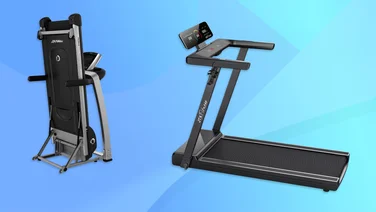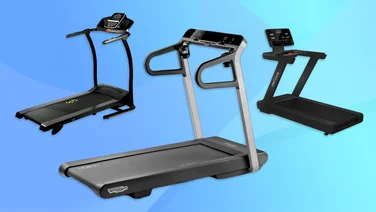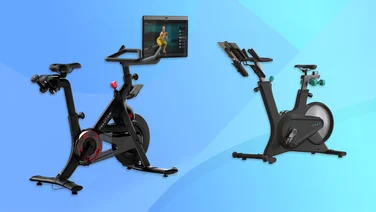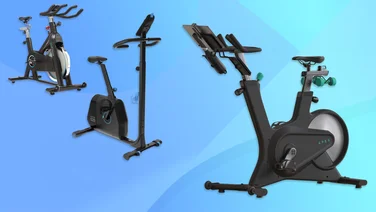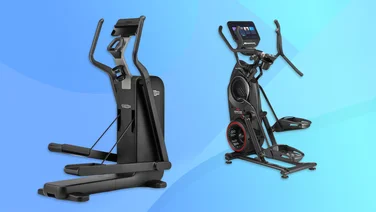To help us provide you with free impartial advice, we may earn a commission if you buy through links on our site. Learn more
- Our expert picks
- The best rowing machine to buy in 2024
- 1. JLL R200 Home Rowing Machine: Best cheap rowing machine
- 2. Domyos Essential 120 Rowing Machine: Best value rowing machine
- 3. Concept2 RowErg: Best rowing machine for serious athletes
- 4. JTX Ignite: Best for affordable air rowing machine
- 5. Viavito Sumi Folding Rowing Machine: Best quiet rowing machine
- 6. Echelon Smart Rower: Best smart rowing machine
- 7. WaterRower Natural Rowing Machine: Best water-resistance rowing machine
- 8. JTX Flow: Best value water-resistance rowing machine
- 9. TechnoGym SkillRow: Best high-end rowing machine
- 10. Hydrow Wave: Best rowing machine for instructor-led workouts
- 11. Ergatta Rower: Best rowing machine for a gamified experience
- How to choose the best rowing machine for you
- What are the different types of rowing machines?
- What else should I look out for?

A rowing machine is a brilliant addition to your home gym equipment. With every stroke using nine major muscle groups, there are few better ways to get fit without putting excessive strain on your joints.
Despite the wildly varying quality and prices, buying your first indoor rower (also known as ergometers or “ergs”) needn’t be a daunting prospect. To take the stress out of the experience, we’ve compiled a selection of the best rowing machines on the market, whether you’re looking to save money or bag the best money can buy.
If you’re unsure as to which type of rowing machine is best for your needs, you can find a detailed buyer’s guide at the bottom of the article. Or, if you already have an idea, check the at-a-glance list below for our top picks.
Our expert picks
Best cheap rower
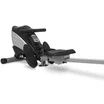
JLL R200 | ~£250
“This is the perfect entry-level rowing machine as it’s affordable and doesn’t require you to commit a vast amount of space in your home. “ | Read our review
Best value rower
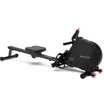
Domyos Essential | ~£300
“The small multi-function console provides you with various stats, ranging from distance covered to stroke rate and calorie expenditure, and it’s also got a tablet holder in case you fancy watching some Netflix while you row.” | Read our review
Best quiet rower
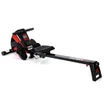
Viavito Sumi Folding Rowing Machine | ~£199
“If you primarily work out with music on, in front of the TV or during unsociable hours, this Viavito machine is the one for you for the simple reason that it makes much less noise than other models.” | Read our review
Best smart rower
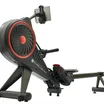
Echelon Smart Rower | ~£949
“It’s simplistic to call this smart rower the Peloton of rowing machines, but that neatly conveys what it does.” | Read our review
The best rowing machine to buy in 2024
1. JLL R200 Home Rowing Machine: Best cheap rowing machine
Price when reviewed: £250 | Check price at Amazon

| Key specs | |
| Dimensions in use (WDH) | 52 x 180 x 49cm |
| Dimensions while stored (WDH) | 52 x 71 x 127cm |
| Weight limit | 100kg |
| ANT+/Bluetooth | No |
| USB workout upload | No |
| Warranty | 1-year |
Benefits: This is the perfect entry-level rowing machine as it’s affordable and doesn’t require you to commit a vast amount of space in your home. Ten levels of magnetic resistance ensure you’re kept challenged as you get fitter, and no tools are required to fold the rower, making it easy to store away. It’s also fairly quiet since it uses magnetic resistance instead of air, and has a clear display that shows stats during your workouts.
Drawbacks: The highest level of resistance might not be challenging enough for experienced rowers.
2. Domyos Essential 120 Rowing Machine: Best value rowing machine
Price when reviewed: £300 | Check price at Decathlon

| Key specs | |
| Dimensions in use (WDH) | 65 x 184 x 51.5cm |
| Dimensions while stored (WDH) | 52 x 72 x 125cm |
| Weight limit | Not specified |
| ANT+/Bluetooth | No |
| USB workout upload | No |
| Warranty | 2-years (parts and labour), 5-years (frame), 10-years (spare parts) |
Benefits: The Essential 120 from Domyos, one of Decathlon’s in-house brands, is the next step up from the JLL R200 featured above. At £300, it’s also pretty budget-friendly, while its 4kg flywheel makes for a smooth rowing experience. The small multi-function console provides you with various stats, ranging from distance covered to stroke rate and calorie expenditure. It’s also got a tablet holder in case you fancy watching some Netflix while you row.
Drawbacks: It’s not the most feature-packed rowing machine, lacking some of the bells and whistles that you’d usually get with a mid-range rower, such as Bluetooth connectivity or ANT+.
3. Concept2 RowErg: Best rowing machine for serious athletes
Price when reviewed: £990 | Check price at Amazon

| Key specs | |
| Dimensions in use (WDH) | 61 x 244 x 106.5cm |
| Dimensions while stored (WDH) | 83.8 x 63.5 x 137.2cm |
| Weight limit | 227kg |
| ANT+/Bluetooth | Both |
| USB workout upload | Yes |
| Warranty | 2-years |
Benefits: The Concept2 RowErg (formerly known as the Model D or E) is the best-selling rowing machine in the world and the rower of choice for the CrossFit games, World Indoor Rowing Championships and Olympic squad selections for good reason.
As well as its smooth action, comfy ergonomic handle, easily adjustable footrests and intuitive resistance settings, the Concept2’s Performance Monitor 5 (PM5) computer system offers simple metrics in an advanced and reliable way.
The RowErg’s PM5 has a backlit LCD display and gives you all the key metrics you need during a workout, including distance, speed, calories, power curve efficiency and watts. Its USB port lets you export all your workouts to your computer, but for even more advanced metrics and analysis, you can sync to the ErgData smartphone app, which will interface with Strava and TrainingPeaks. It works with both ANT+ and Bluetooth heart-rate monitors, too.
Drawbacks: At just over 2.4m in length, it’s a large machine –meaning you’ll need a fair bit of space when it’s in use. However, the quick-release framelock mechanism means you can split the body and store the two halves upright.
Read our full Concept2 RowErg review
4. JTX Ignite: Best for affordable air rowing machine
Price when reviewed: £699 | Check price at JTX Fitness

| Key specs | |
| Dimensions in use (WDH) | 62 x 240 x 107cm |
| Dimensions while stored (WDH) | 58 x 113 x 107cm |
| Weight limit | 150kg |
| ANT+/Bluetooth | Both |
| USB workout upload | No |
| Warranty | 3-years |
Benefits: The JTX Ignite is cheaper than some of its closest air-resistance competitors – looking at you, Concept2 – but, bar a few finishing points, doesn’t make very many compromises. It uses a large fan at the front to generate resistance and an adjustable baffle to increase or decrease the intensity of the workout. The rowing action is smooth and responsive, the seat is comfortable enough, and the grab handle is curved to the point that it can reasonably be described as “ergonomic”.
The screen is fairly basic, offering essential information without any fancy flourishes. As with many rivals, this is self-powered, so you have to pull a few strokes to get it fired up, but it shows stats like distance, calories burned, stroke rate and power output, as well as split times. This is enough to enjoy some serious workouts but you can also pair it with a Polar heart rate chest strap (sold separately) to train in specific heart rate zones.
Like the Concept2 and other similar rowers, the Ignite splits in two, so it can be folded and stored on its end to save space. And the unit weighs just 38kg, which makes it fairly easy to break down and move around.
Drawbacks: There’s a smartphone holder so you can row along to virtual classes, though it proved rather flimsy during testing. Other areas in which it feels like JTX has scrimped on build quality include the plastic covering on the flywheel and the seat – the sliding mechanism is a fairly basic two-roller system, while the seat itself has minimal padding.
5. Viavito Sumi Folding Rowing Machine: Best quiet rowing machine
Price when reviewed: £299 | Check price at Sweatband

| Key specs | |
| Dimensions in use (WDH) | 53 x 178 x 48cm |
| Dimensions while stored (WDH) | 53 x 74 x 48cm |
| Weight limit | 120kg |
| ANT+/Bluetooth | No |
| USB workout upload | No |
| Warranty | 2-years |
Benefits: If you primarily work out with music on, in front of the TV or during unsociable hours, this Viavito machine is the one for you for the simple reason that it makes much less noise than other models. Of course, it’s not silent, but this magnetic resistance rower is as close as you’ll get to peace and quiet during a workout.
That’s not its only appeal, either. Ten levels of magnetic resistance help you find the right intensity for your training, while its basic LCD screen lets you see important info such as distance, calories burned and stroke rate. The Viavito also boasts a handy fold-up design.
Drawbacks: The main caveat is the lack of support for heart-rate monitors, meaning you won’t be able to track your pulse readings while exercising.
6. Echelon Smart Rower: Best smart rowing machine
Price when reviewed: £949 | Check price at Echelon

| Key specs | |
| Dimensions in use (WDH) | 52 x 215 x 111cm |
| Dimensions while stored (WDH) | 52 x 101 x 154cm |
| Weight limit | 135kg |
| ANT+/Bluetooth | Bluetooth |
| USB workout upload | No |
| Warranty | 1-year |
Benefits: It’s simplistic to call this smart rower the Peloton of rowing machines, but that neatly conveys what it does. The rower links with the Echelon app, which you can view mid-row using a tablet mounted on the console, and that app is laden with live and on-demand instructor-led rowing workouts. There are more than 900 classes you can tackle on demand, plus a handful of live ones to join each day.
The classes are great for motivating you, especially when it comes to HIIT workouts, but if you’re not in the mood for that you can also row on rivers in scenic locations through the Echelon app. You will also find non-rowing classes in the app, with options like yoga and meditation.
There are 32 levels of magnetic resistance on the machine, which you can change using buttons in the middle of the handle. It’s a great all-round package for people who want the extra motivation and camaraderie of classes during their rows, but you will be paying through the nose for it.
Drawbacks: You’ll have to pay a £40/mth membership to access the Echelon app to reap the full benefits of its smart functionality.
7. WaterRower Natural Rowing Machine: Best water-resistance rowing machine
Price when reviewed: £1,099 | Check price at Amazon

| Key specs | |
| Dimensions in use (WDH) | 57 x 209 x 51cm |
| Dimensions while stored (WDH) | 57 x 51 x 207cm |
| Weight limit | 300kg |
| ANT+/Bluetooth | ANT+ |
| USB workout upload | No |
| Warranty | 3-years (parts), 5-years (frame) |
Benefits: If you want a rowing machine that marries expert performance with handcrafted design, this model from WaterRower could be the one for you. Made from solid ash and treated with Danish oil, it’s a real looker but its appeal isn’t just in the design – it performs like a high-end rower, too.
Thanks to the ingenious water-resistance flywheel, it’s the closest you will get to real rowing without leaving the house. Like the Concept2, it has adjustable footrests and a nice grippy handle and, of course, there’s the LCD display, which shows all the key metrics during your workout such as distance, stroke speed and watts.
The dolly wheels on the WaterRower Natural Rowing Machine are a nice touch, letting you easily wheel it away and store it vertically.
Drawbacks: It’s a pretty expensive rower compared to others in the roundup, though it does come with a five-year frame warranty and three-year parts warranty.
8. JTX Flow: Best value water-resistance rowing machine
Price when reviewed: £549 | Check price at JTX Fitness

| Key specs | |
| Dimensions in use (WDH) | 70 x 192.8 x 59cm |
| Dimensions while stored (WDH) | Vertical storage |
| Weight limit | 135kg |
| ANT+/Bluetooth | Heart rate chest strap |
| USB workout upload | No |
| Warranty | 2-years |
Benefits: Taking a leaf out of WaterRower’s book, JTX offers a machine that uses water as the resistance system, but one that doesn’t require you to shell out on a hand-crafted wooden frame. The water resistance system effectively means you have an unlimited amount of resistance, as the harder you pull, the harder the machine kicks back.
During my testing, I found the seat on the Flow to be one of the most comfortable, and the roller system among the smoothest, in this roundup. Similar praise can be heaped on the computer since, despite being relatively basic, it’s one of the easiest to use and offers several modes to keep rowers engaged, even without online connectivity. The Keymetrix console even features a neat race mode, allowing you to compete against the computer in the form of some moving dots on an LCD screen – it’s a far cry from the Ergatta gamified experience, but it’s enough to mix up your workout.
Quiet, lightweight and easy to store on its end, I found this to be one of the smoothest, most comfortable rowers in the JTX range.
Drawbacks: The only real flaw has to do with the size. Anyone over 6’6” will have to look elsewhere, as the slider rail is a tad on the short side.
9. TechnoGym SkillRow: Best high-end rowing machine
Price when reviewed: £4,150 | Check price at TechnoGym

| Key specs | |
| Dimensions in use (WDH) | 63 x 244 x 128cm |
| Dimensions while stored (WDH) | N/A |
| Weight limit | 160kg |
| ANT+/Bluetooth | Both |
| USB workout upload | No |
| Warranty | 1-year |
Benefits: TechnoGym is a new player in the world of rowing machines, but is extremely eager to challenge the domination of the Concept2. Thanks to Bluetooth and ANT+ compatibility, the SkillRow can link up to a smartphone app and any third-party heart-rate monitors. The accompanying SkillRow app offers long-term form analysis, as well as multi-player interactivity and virtual race simulation. Also on offer are structured group sessions.
The machine isn’t just geared towards competitive rowers, though. It has simple adjustability that lets you switch resistance from a rowing simulation to a high-resistance power development setting. The SkillRow offers interactive coaching for rowing technique, too, because even the best machine is only as good as the user’s form and ability to maximise a workout.
Drawbacks: There’s no point avoiding the elephant in the room – the price tag. That being said, if you’re looking to splash out on a high-end rower, it’s not going to come cheap.
Read our full TechnoGym SkillRow review
10. Hydrow Wave: Best rowing machine for instructor-led workouts
Price when reviewed: £1,435 | Check price at Hydrow

| Key specs | |
| Dimensions in use (WDH) | 49 x 204 x 110cm |
| Dimensions while stored (WDH) | 76 x 67 x 209cm |
| Weight limit | 170kg |
| ANT+/Bluetooth | Both |
| USB workout upload | Via app |
| Warranty | 1-year |
Benefits: It’s very easy to draw comparisons between this and Peloton products, simply because the offering is largely similar. It’s a relatively standard piece of fitness equipment that’s received some swanky styling, a large interactive screen and on-demand workouts – but here your instructors are professional rowers, piloting real boats along real waterways as you merrily row along with them. What’s more, Hydrow offers a host of “off-machine” workouts that cover everything from core strength to pilates.
The rowing machine itself uses magnetic resistance, which doesn’t offer the most realistic rowing feel, though it provides enough challenge for even fairly advanced rowers. More importantly, the magnetic resistance system is quiet, which can’t be said for the fan-operated opposition.
This Wave is a slightly smaller, more compact version of the classic Hydrow machine and, with the sold-separately anchor accessory, it can be stowed upright and out of the way, making it perfect for smaller spaces.
Drawbacks: With all being said, you’ll still have to fork out £38/mth to access the daily live workouts, 4,000+ on-demand sessions and live leaderboards.
Read our full Hydrow Wave review
11. Ergatta Rower: Best rowing machine for a gamified experience
Price when reviewed: £2,495 | Check price at WaterRower

| Key specs | |
| Dimensions in use (WDH) | 58 x 218 x 102cm |
| Dimensions while stored (WDH) | N/A |
| Weight limit | 227kg |
| ANT+/Bluetooth | Both |
| USB workout upload | No |
| Warranty | 5-years (frame), 3-years (parts) |
Benefits: Manufactured by the same skilful folk that created the gorgeous WaterRower, the Ergatta Rower is a pairing of timeless style and cutting-edge on-demand and interactive workouts.
Fusing the brand’s renowned water-resistance flywheel, the rowing experience is as handsome as the highly polished American Cherry wood from which this unit is fashioned. Offering a gloriously gentle “whoosh” with every stroke, the rowing sensation is about as close to skimming across a picturesque pond as it gets.
But the real boon is Ergatta’s involvement. The company specialises in “gamifying” the workout experience, offering innovative interactive sessions that see users competing online by collecting rings with every stroke in a game titled “Vortex”, or perfecting technique by keeping a shooting meteor in the correct zone with the perfect power and stroke rate.
Unlike other connected units, Ergatta avoids chiselled instructors and instead relies on our human nature to want to compete – and that, in my experience, works extremely well, with extremely tough workouts becoming more fun.
Drawbacks: The Ergatta Rower carries a hefty price tag, while membership to its interactive services will set you back a wallet-stinging £29/mth.
How to choose the best rowing machine for you
What are the different types of rowing machines?
There are four different types of rowing machines, each of which uses a different type of resistance and comes with its own pros and cons:
Air rowing machines
Air rowers generate resistance using a flywheel that rotates within an enclosed cage. You can let more air into the cage to generate more resistance or close it to lower the resistance. Air-resistance machines are the most common but generate quite a bit of noise, which might not be practical in all households.
Hydraulic rowers
Often referred to as piston rowing machines, these are usually the most affordable option. They use a pair of hydraulic pistons to generate resistance and tend to be the smallest and therefore the easiest to store. However, they often bear little to no resemblance to the movement of rowing. Their range of movement is typically limited to a short arc that won’t offer the full-body benefits of a more expensive rowing machine.
Water-resistance models
Water rowers are designed to mimic the experience of real rowing, using large water-filled tanks and internal paddles to create resistance. They’re relatively quiet and often designed from wood, making them aesthetically fetching. The major disadvantage is cost – they’re rather expensive and offer less functionality than the top machines.
Magnetic
Compared to the other varieties, these are extremely quiet and can be manually adjusted using a digital console or a slide lever, depending on the model. The disadvantage is that the magnetic resistance lacks the reactive and powerful resistance of air or water machines, making it harder to achieve the overall muscle gains of a more advanced rowing machine.
READ NEXT: Best fitness trackers
What else should I look out for?
Feedback and data
These are important to making progress in your fitness. Almost all rowing machines come with an LCD display that lets you know how far you’ve rowed and how quickly, with others giving you more advanced metrics, too. If all you want is a rower to give you a quick exercise fix, there’s no need to go for a model that provides extensive workout data.As with most things, the more you spend, the more features you normally get. Some rowing machines include a USB port to export data from your workout, while others will support Bluetooth Smart, enabling you to connect to a range of devices and access smartphone apps. The slightly more advanced rowers will incorporate ANT+ (Advanced and Adaptive Network Technology), which is a wireless protocol used to collect and transfer sensor data, such as your heart rate, to provide reliable and consistent fitness tracking.
Longevity and toughness
It may seem like a strange requirement for an indoor machine, but extensive use can take its toll on a rowing machine so it’s worth considering how heavy-duty the unit is. Hydraulic pistons, for instance, can begin to wear out. The Concept2 flywheel, by comparison, is fairly bombproof and many units from 30 years ago (the infamous Model B) are still in use.
Realism of the resistance
This is important for more than just competitive rowers. Hydraulic and magnetic resistance may look the same, but the unique benefit of rowing exercise relies on resistance changing according to the speed of the stroke. A flywheel or water chamber can generate that type of resistance, meaning that your arms and body are offered a dynamic workout just as much as your quads, whereas cheaper systems cannot.
A final advantage of a flywheel system is consistency across machines. You can jump on a top-end air or water resistance machine in any gym or health club in the world and pick up where you left off from your home workout.
Connectivity
The current trend among home gym equipment manufacturers is to make everything as “connected” as possible. This can simply mean the ability to connect a smartphone or tablet, but it sometimes involves large touchscreens added to the equipment for a more immersive experience.
If you’ve found yourself easily bored by an analogue kit, purchasing something that offers this connectivity could be key. From “gamifying” the workout experience, to offering professional instructor-led classes, these connected offerings can not only help you improve your rowing form and help you get fit, but they also increase the shelf life of that very expensive investment you’ve just made.
That said, it’s worth noting that many of these online workout apps require a monthly or annual subscription, so ensure you factor that into the cost.







